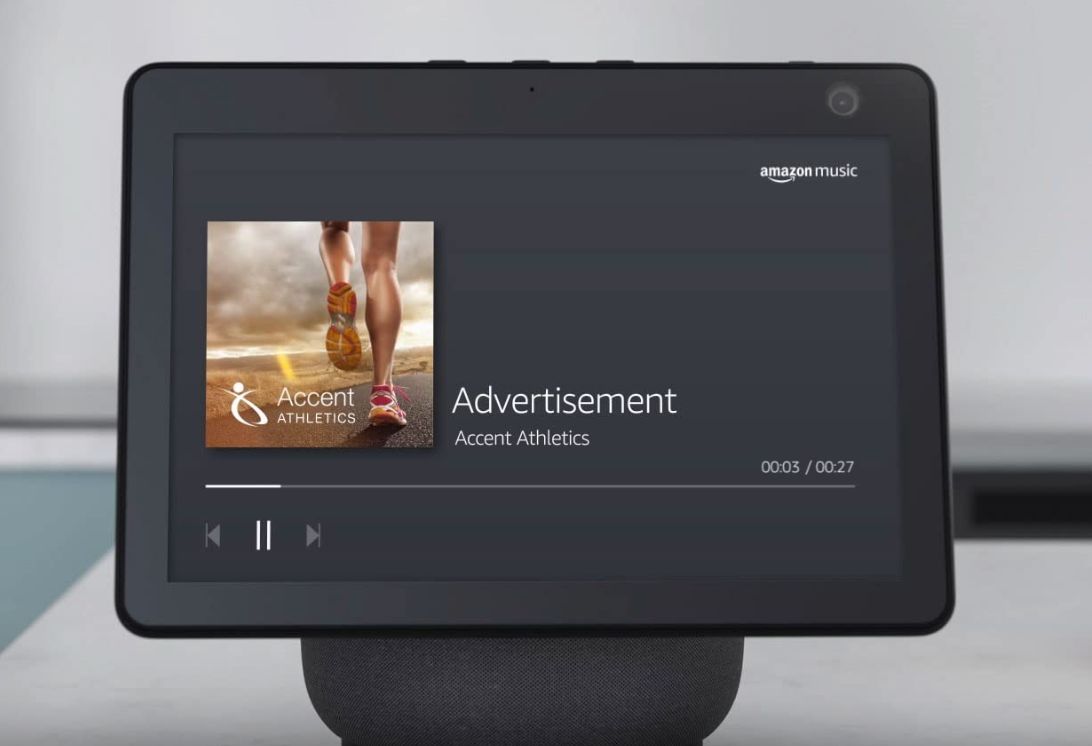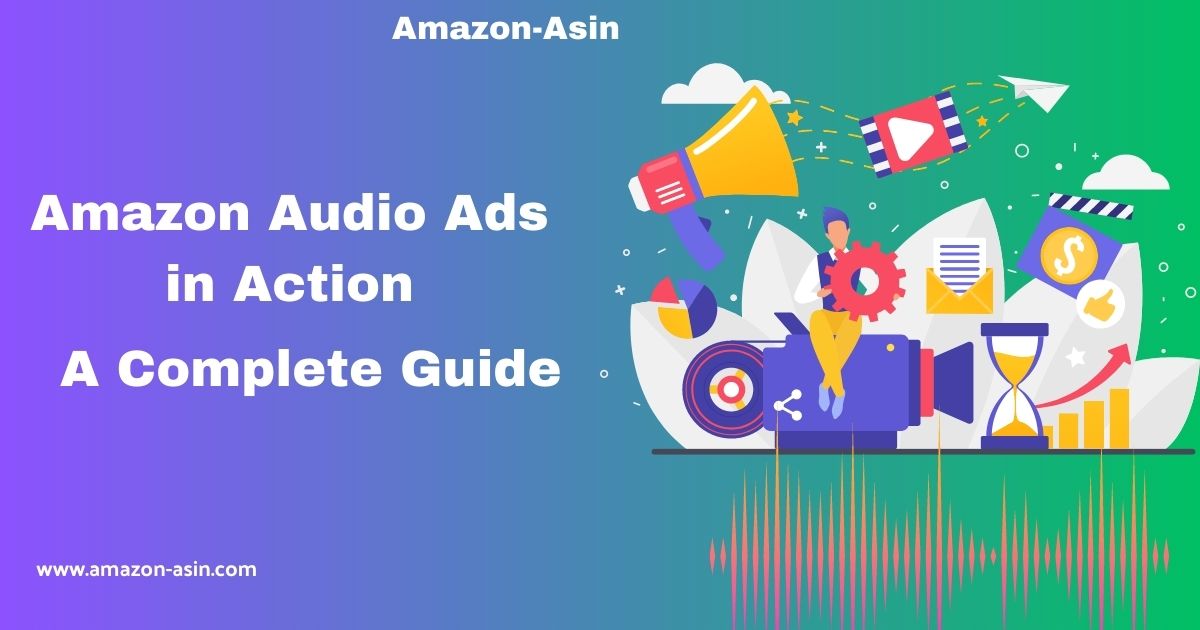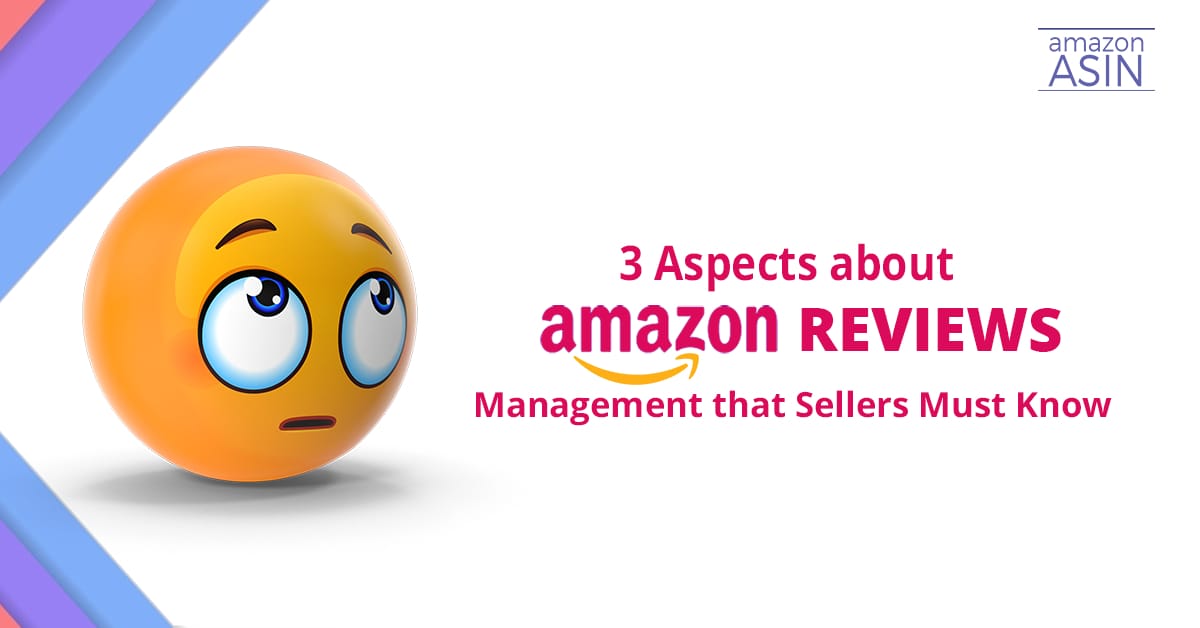In today’s digital landscape, advertising has evolved beyond traditional visual mediums. As consumers immerse themselves in audio content, there is a growing opportunity for businesses to leverage the power of sound to engage their audiences effectively. Amazon, a pioneer in e-commerce and digital services, has strategically moved into the audio advertising space, introducing “Amazon Audio Ads.”
Quick guide
- The Rise of Audio Advertising in the Digital Era
- Overview of Amazon Audio Ads and Their Potential Impact
- Why Should You Use Amazon Audio Ads?
- Understanding Amazon Audio Ads
- Benefits of Amazon Audio Ads
- Creating Compelling Audio Ad Campaigns
- Targeting the Right Audience
- Measuring Success and ROI
- Challenges and Limitations
- Getting Started with Amazon Audio Ads
- Future Outlook for Amazon Audio Ads
- Conclusion
The Rise of Audio Advertising in the Digital Era
Over the past decade, there has been a considerable shift in consumer behavior concerning content consumption. Audio content has become integral to their daily routines as people embrace audio streaming platforms, podcasts, and smart speakers. This trend allows advertisers to reach their target audiences through audio advertisements.
Recognizing the growing popularity of audio content consumption, Amazon has entered the audio advertising domain with “Amazon Audio Ads.” Leveraging its vast user base and data-driven capabilities, Amazon aims to provide businesses with a new platform to engage customers through the power of sound.
Overview of Amazon Audio Ads and Their Potential Impact
Amazon Audio Advertising enables advertisers to create compelling audio commercials that resonate with their audiences. With various formats and targeting options, brands can deliver personalized messages to users at the right time. This capability opens up exciting business opportunities to enhance brand recognition, drive conversions, and build lasting customer relationships.
Why Should You Use Amazon Audio Ads?
There are several compelling reasons to consider Amazon Audio Ads as a crucial element of your marketing strategy. First and foremost, it allows you to tap into a vast and growing audience of audio consumers. By reaching potential customers during their audio experiences, you can create brand awareness and establish deeper connections with your target demographic.
Moreover, audio ads offer a unique opportunity to connect emotionally with consumers. Sound can evoke emotions and trigger memories, making audio advertising an excellent medium to foster brand affinity and loyalty.
Another compelling advantage of Amazon Audio advertising is its seamless integration with Amazon’s vast ecosystem. With access to detailed user data and advanced targeting tools, you can precisely reach your intended audience, increasing the effectiveness of your advertising campaigns.
Understanding Amazon Audio Ads
Amazon Audio Ads are a form of digital advertising offered by Amazon that enables brands and businesses to use audio material to reach their target audience. These ads are designed to be played during audio streaming sessions, such as on Amazon Music and Audible, as well as on third-party platforms through Amazon-owned or operated properties.
What are Amazon Audio Ads?
Amazon Audio Ads are short, engaging audio commercials that allow advertisers to convey their brand message to users while they listen to music, audiobooks, or other audio content. These ads are created in a way that seamlessly integrates with the user experience, providing a non-intrusive and engaging advertising platform.
How to Use Amazon Audio Ads
Using Amazon Audio advertising is a straightforward process for advertisers. Advertisers must create compelling audio ad content aligning with their brand messaging and marketing objectives to get started. The next step involves utilizing Amazon’s targeting options to reach the desired audience segment.
Advertisers can leverage Amazon’s vast user data and sophisticated targeting tools to identify the most relevant audience for their product or service. They can target based on various factors, such as demographics, interests, behaviors, and purchase history, ensuring their ads reach the right people at the right time.
Once the audio ad and targeting parameters are set, advertisers can launch their campaigns on Amazon’s audio streaming platforms and partner networks, maximizing their reach and impact.
Who Can Use Amazon Audio Ads
Amazon Audio Ads are available to many businesses, including brands, advertisers, and sellers registered on the Amazon Advertising platform. This means that both small and large businesses can utilize this advertising format to promote their products or services.
Whether you are an established brand looking to boost brand awareness or a new seller aiming to introduce your products to a targeted audience, Amazon Audio Advertising provides a powerful and accessible marketing tool.
Where Will My Amazon Audio Ads Appear?
Amazon Audio Ads will appear during users’ audio streaming experiences on Amazon Music and Audible. Amazon Voice Ads may also appear on third-party platforms and services that are part of Amazon’s ad network.

These advertisements are placed into relevant audio content to achieve maximum exposure and engagement with the target audience.
Are Amazon Audio Ads Non-Skippable?
Amazon Audio Ads were typically non-skippable. Users must listen to the entire ad before resuming their audio content.

The non-skippable nature of these ads ensures that advertisers can deliver their message effectively and that users are more likely to engage with the content.
Benefits of Amazon Audio Ads
Reaching a Growing Audience of Audio Consumers
With the increasing popularity of smart speakers and audio streaming services, there is a growing audience of audio consumers. Amazon Audio Advertising provides an excellent avenue for advertisers to tap into this expanding market of engaged listeners. By delivering audio commercials during users’ music or audiobook streaming sessions, businesses can effectively reach potential customers during moments of relaxation and enjoyment, making their messages more receptive and memorable.
Tapping into the Power of Voice and Sound for Brand Engagement
Audio advertising offers a unique opportunity to leverage the power of voice and sound to connect with audiences on an emotional level. Through carefully crafted audio ad scripts, businesses can use compelling storytelling, music, and sound effects to evoke emotions, trigger memories, and build a deeper connection with listeners. This heightened emotional engagement can lead to increased brand recall, affinity, and loyalty, enhancing the overall impact of advertising campaigns.
Seamless Integration with Amazon’s Ecosystem
One of the key advantages of using Amazon Audio Advertising is its seamless integration with Amazon’s extensive ecosystem. Amazon possesses vast user data, including purchase history, preferences, and behavioral patterns. This data-driven approach allows advertisers to target their ads precisely to the most relevant audience segments. Businesses can optimize ad performance and increase the likelihood of conversions by delivering personalized audio ads to users based on their preferences and interests.
Measurable Results and Analytics
Amazon provides comprehensive analytics and measurement tools to track the success of audio ad campaigns. Advertisers can access data on ad impressions, click-through rates (CTRs), conversions, and other key performance indicators (KPIs). This data-driven approach enables advertisers to gauge the effectiveness of their campaigns and make data-backed decisions to optimize their advertising strategies further. With precise analytics, businesses can refine their targeting, ad content, and budget allocation to achieve the best possible return on their advertising investment.
Creating Compelling Audio Ad Campaigns
Audio advertising presents a unique opportunity to engage audiences through the power of sound and storytelling. Crafting a compelling audio ad campaign requires a thoughtful approach that leverages the medium’s strengths and resonates with listeners. Here are some essential strategies for creating engaging and impactful audio ad campaigns:
Crafting Captivating Storytelling for Audio Ads
Effective storytelling is at the heart of any successful audio ad campaign. Unlike visual ads, audio ads rely solely on the spoken word and sound to convey the brand message. Begin by understanding your target audience and their pain points or desires. Craft a narrative that connects them emotionally through humor, empathy, or aspiration. A well-crafted story will draw listeners in, making them more receptive to the message and increasing brand recall.
Best Practices for Engaging Audio Ad Scripts
Keep your audio ad script concise and focused. Aim to convey the core message quickly, typically 15 to 30 seconds. Use clear and straightforward language, avoiding jargon or complicated phrases. Create a sense of urgency or excitement to encourage immediate action from the listeners. Ensure the voice-over talent delivers the script enthusiastically and authentically, enhancing engagement.
Leveraging Music and Sound Effects for Emotional Resonance
Music and sound effects play a pivotal role in audio ads by setting the tone and evoking emotions. Choose background music that complements the ad’s message and creates the desired mood, whether energetic, soothing, or dramatic. Sound effects can add depth and interest to the narrative, capturing listeners’ attention and enhancing the overall impact of the ad.
Adapting Visuals to an Audio-Only Format
While audio ads lack visual elements, they can still benefit from subtle references to visuals through descriptive language. Paint vivid mental images that convey the product’s features or benefits to listeners. However, avoid relying too heavily on visuals, as the strength of audio ads lies in their ability to immerse listeners through sound and storytelling.
How to add a CTA to your Amazon Audio Ads
A compelling Call-to-Action (CTA) is crucial for guiding listeners to take action after hearing the ad. Be explicit about what you want listeners to do, whether visiting a website, purchasing, or signing up for a newsletter. Make the CTA easy to remember and concise, ensuring it aligns with the ad’s primary objective. Additionally, provide clear instructions on following through with the CTA, such as providing a URL or a specific promotional code.
Targeting the Right Audience
This is essential for the success of any advertising campaign, and Amazon offers powerful data-driven targeting tools to help advertisers reach their desired audience effectively. Here are some key strategies for targeting the right audience on Amazon:
Using Amazon’s Data-Driven Targeting Tools Effectively
Amazon’s vast ecosystem generates a wealth of user data, including browsing behavior, purchase history, interests, and demographics. Leveraging this data, advertisers can utilize various targeting options to narrow their audience. Some of the data-driven targeting tools offered by Amazon include:
Demographic Targeting
Targeting users based on age, gender, location, and other demographic factors.
Behavioral Targeting
Reaching users who have exhibited specific behaviors, such as recent product searches or purchases.
Interest-Based Targeting
Targeting users with specific interests or affinities related to the advertised product or category.
Contextual Targeting
Placing ads on pages or products that align with the ad’s content or keywords.
Remarketing
Targeting users who have interacted with the brand previously, increases the chances of conversion.
Personalization and Tailoring Ads to Individual Preferences
Personalization is a powerful tool for capturing the attention of potential customers. Advertisers can create a more relevant and engaging user experience by tailoring ads to individual preferences and behavior. Personalization can be achieved by dynamically inserting user-specific details, such as their name or location, into the ad content. Personalized product recommendations based on past interactions can enhance the ad’s effectiveness.
Examples of Successful Audience Targeting Strategies
Cross-Selling and Upselling
Targeting customers who have made previous purchases to offer complementary or upgraded products can increase sales and customer loyalty.
Abandoned Cart Remarketing
Targeting users who have abandoned their shopping carts with targeted ads, reminding them of products they left behind and encouraging them to complete their purchase.
Seasonal Targeting
Tailoring ads based on seasonal trends and holidays can resonate with consumers when they are more likely to make related purchases.
Lookalike Audiences
Identifying high-value customers and creating lookalike audiences based on their characteristics can help reach new potential customers who share similar traits and interests.
New Product Launches
Targeting users interested in similar products or categories can effectively introduce new products to a receptive audience.
Measuring Success and ROI
Effective measurement of key performance indicators (KPIs) is crucial for evaluating the success of audio ad campaigns and determining their return on investment (ROI). Here are some essential considerations for measuring success and analyzing the performance of Amazon Audio Ad campaigns:
Key Performance Indicators (KPIs) for Audio Ad Campaigns
Ad Impressions
The number of times your audio ad is played or heard by users.
Click-Through Rate (CTR)
Percentage of users who click on your ad after hearing it, indicating their interest in learning more about your offering.
Conversion Rate
The percentage of users who complete the desired action, such as signing up or purchasing a newsletter, after hearing the ad.
Return on Ad Spend (ROAS)
The revenue generated compared to the ad spend helps to determine the campaign’s overall efficiency.
Brand Lift
Measuring the impact of the ad on brand awareness, recall, and consideration.
Cost per Acquisition (CPA)
The average cost incurred to acquire a new customer through the ad campaign.
Ad Completion Rate
The percentage of users who listen to the full audio ad without skipping or stopping it.
Tracking and Analyzing Campaign Performance
Amazon offers powerful tracking and analytics tools, enabling advertisers to monitor the real-time performance of their audio ad campaigns. These tools provide valuable insights into essential metrics like ad impressions, CTR, conversions, and more, empowering advertisers to assess the effectiveness of their campaigns effectively.
Advertisers can use tracking pixels and unique URLs to measure website traffic and conversions generated by the audio ads. Amazon’s ad platform also offers comprehensive reporting and dashboards that provide an overview of campaign performance and data breakdowns based on various targeting parameters.
How to Track the Success of Your Amazon Audio Ad Campaigns
To track the success of Amazon Audio Ad campaigns effectively, follow these steps
Define Clear Objectives
Establish specific campaign objectives and KPIs based on your advertising goals. Whether it’s increasing brand awareness, driving sales, or generating leads, clear objectives will help you measure success accurately.
Implement Conversion Tracking
Set up conversion tracking pixels or URLs to monitor actions taken by users after hearing the ad, such as website visits, form submissions, or purchases.
Monitor Campaign Metrics
Regularly review the campaign’s performance metrics, including ad impressions, CTR, conversions, and ad completion rate, among others. Compare these metrics to your predefined KPIs to assess the campaign’s effectiveness.
Conduct A/B Testing
Test different ad creatives, targeting options, and CTAs to identify which variations perform better. A/B testing lets you make data-driven decisions and optimize your ad campaigns for improved results.
Interpreting Results and Making Data-Driven Improvements
Interpreting the campaign results involves analyzing the data to identify strengths, weaknesses, and areas for improvement. Based on the insights gathered, make data-driven adjustments to optimize the campaign performance. Consider reallocating the budget to high-performing ads or targeting segments, refining ad messaging, or introducing new creatives to refresh the campaign.
Challenges and Limitations
Adapting to the Audio-Only Format
Creating compelling audio ads that effectively convey the brand message and engage the audience solely through sound can be challenging. Unlike visual ads, which have the advantage of using visuals to captivate viewers, audio ads must rely on storytelling, music, and sound effects to evoke emotions and capture attention. Advertisers must invest in creative strategies to ensure their audio ads resonate with listeners and leave a lasting impression.
Competition and Standing Out in the Audio Advertising Space
As the popularity of audio advertising grows, so does the competition for users’ attention. With numerous brands vying for the same audience, developing unique and memorable audio ad campaigns that set brands apart from their competitors becomes essential. To stand out, advertisers must focus on creating distinctive content, storytelling, and soundscapes that capture the essence of their brand and resonate with listeners.
Ad Fatigue and Frequency Capping
Repeated exposure to the same audio ad can lead to ad fatigue, causing listeners to tune out or become disinterested in the content. Advertisers need to balance frequency and audience engagement to avoid repeatedly overwhelming users with the same ad. Implementing frequency capping, which restricts the number of times a user hears a single ad within a defined time window, can help reduce ad fatigue and preserve a pleasant user experience.
Getting Started with Amazon Audio Ads
Amazon Audio Ads provides a powerful platform for advertisers to connect with their target audience through audio content. To get started with Amazon Audio Advertising, follow these steps:
Setting Up Amazon Audio Ads
Access Amazon Advertising Console
Log in to your Amazon Advertising Console account. If you don’t have an account, create one to get started.
Create an Audio Ad Campaign
Click the “Create Campaign” button and select “Audio” as the campaign type.
Choose Campaign Details
Provide relevant details such as campaign name, start and end dates, and budget allocation.
Define Targeting Options
Using Amazon’s data-driven targeting tools, you may define your target audience based on demographics, interests, behaviors, and other factors.
Upload Audio Ad
Upload your pre-recorded audio ad in the specified format (e.g., MP3) and specify the audio duration (typically 15 or 30 seconds).
Set Bid and Budget
Define your bid strategy and daily or lifetime campaign budget. You can choose from options like Cost per Mille (CPM) or Cost per Click (CPC) bidding.
Review and Launch
Review your campaign settings, targeting options, and ad creatives before launching your Amazon Audio Ad campaign.
Budgeting and Bidding Strategies
Determine Your Budget
Set a realistic budget based on your marketing objectives and the expected audience reach. Consider your product’s margins and customer lifetime value to allocate an appropriate budget.
Choose Bid Strategy
The bid strategy determines how much you will pay for ad impressions or clicks. Select the bid strategy that aligns with your campaign goals and budget. Test different bid strategies to find the one that delivers the best results.
Monitor and Optimize
Regularly monitor your campaign’s performance, track key performance indicators (KPIs), and adjust your bid and budget based on the results. Optimize your bids to achieve a balance between ad visibility and cost-effectiveness.
Integration with Other Amazon Advertising Tools
Amazon Audio Ads can be integrated with other advertising tools within Amazon’s ecosystem to enhance your overall marketing efforts. Some integration options include:
Sponsored Brands
Combine Amazon Audio Advertising with Sponsored Brands campaigns to create a comprehensive advertising strategy that includes audio and visual elements to promote your brand and products.
Product Display Ads
Complement your audio ad campaign with Product Display Ads to target shoppers with specific interests and drive them to your product detail pages.
Custom Audiences
Leverage Amazon’s custom audiences to reach customers who have previously interacted with your brand or products, enhancing the effectiveness of your audio ad campaigns.
Future Outlook for Amazon Audio Ads
Audio advertising is poised for significant growth in the coming years, driven by changes in consumer behavior and technological advancements. As part of this trend, Amazon Audio Advertising will likely play a crucial role in the evolving advertising landscape. Here are some predictions for the future growth of Amazon Voice Ads
Predictions for the Growth of Audio Advertising
Increase in Audio Content Consumption
With the rising popularity of audio streaming platforms, podcasts, and smart speakers, the audience for audio content will continue to grow. This trend will create more opportunities for advertisers to reach consumers through audio ads.
Audio-First Approach
Advertisers will adopt an “audio-first” approach, recognizing the power of audio advertising to engage consumers on a more personal and emotional level. Brands will invest more in creating high-quality, captivating audio ads to stand out in the audio advertising space.
Personalization and Targeting
Advancements in data analytics and AI technologies will enable more sophisticated personalization and targeting capabilities for audio ads. Advertisers will leverage Amazon’s vast user data to deliver highly relevant and tailored ads to specific audience segments.
Integration with Voice Commerce
As voice-activated devices become more prevalent, audio ads will seamlessly integrate with voice commerce experiences. Users can interact with ads and purchase through voice commands, creating a new dimension of audio-based transactions.
Advancements in Audio Technology and Targeting Capabilities
Enhanced Ad Format Options
Advertisers can expect more innovative audio ad formats beyond traditional audio commercials. Interactive audio ads, branded audio content, and dynamic audio messages may become more prevalent, providing new ways to engage listeners.
Contextual and Behavioral Targeting
Advancements in AI-driven targeting technologies will enable advertisers to target users based on their demographics, contextual cues, and behavioral patterns. This will result in more relevant and timely ad placements, increasing the effectiveness of audio advertising.
Voice Recognition and Personal Assistants
Improved voice recognition technology will enable more seamless interactions between audio ads and personal assistants like Amazon Alexa. Brands may create audio ads that trigger specific actions or responses from voice-activated devices.
How Businesses Can Stay Ahead in the Evolving Audio Landscape
Embrace Multi-Channel Strategies
Businesses should adopt multi-channel advertising strategies that include audio, visual, and other formats. Integrated campaigns combining audio and visual ads can create a cohesive and immersive brand experience.
Invest in Creative Storytelling
Businesses should invest in creative storytelling to capture listeners’ attention in a competitive audio advertising space. Compelling narratives, authentic voice-overs, and emotionally resonant messages can leave a lasting impact on the audience.
Leverage Data and Analytics
Businesses should leverage data-driven insights to optimize their audio ad campaigns continually. Regularly monitor performance metrics, test strategies, and make data-backed adjustments to improve ROI.
Be Innovative
As audio advertising evolves, businesses should remain open to adopting new ad formats and technologies. Embracing innovation and staying at the forefront of audio advertising trends can give brands a competitive edge.
Conclusion
Amazon Audio Ads presents a compelling opportunity for businesses to leverage the power of audio advertising in the ever-evolving digital landscape. As consumers embrace audio content through streaming platforms and smart speakers, audio ads offer a unique and immersive way to engage with the audience personally and emotionally.
With the rise of audio content consumption, the future outlook for Amazon Audio Ads is promising. Predictions suggest a continued growth in audio advertising fueled by technological advancements, data-driven targeting capabilities, and increased integration with voice-activated devices.
To succeed in audio advertising, businesses must adapt their marketing strategies to embrace an “audio-first” approach. Crafting captivating storytelling, personalizing ad content, and incorporating targeted strategies will be key to standing out in a competitive environment.




